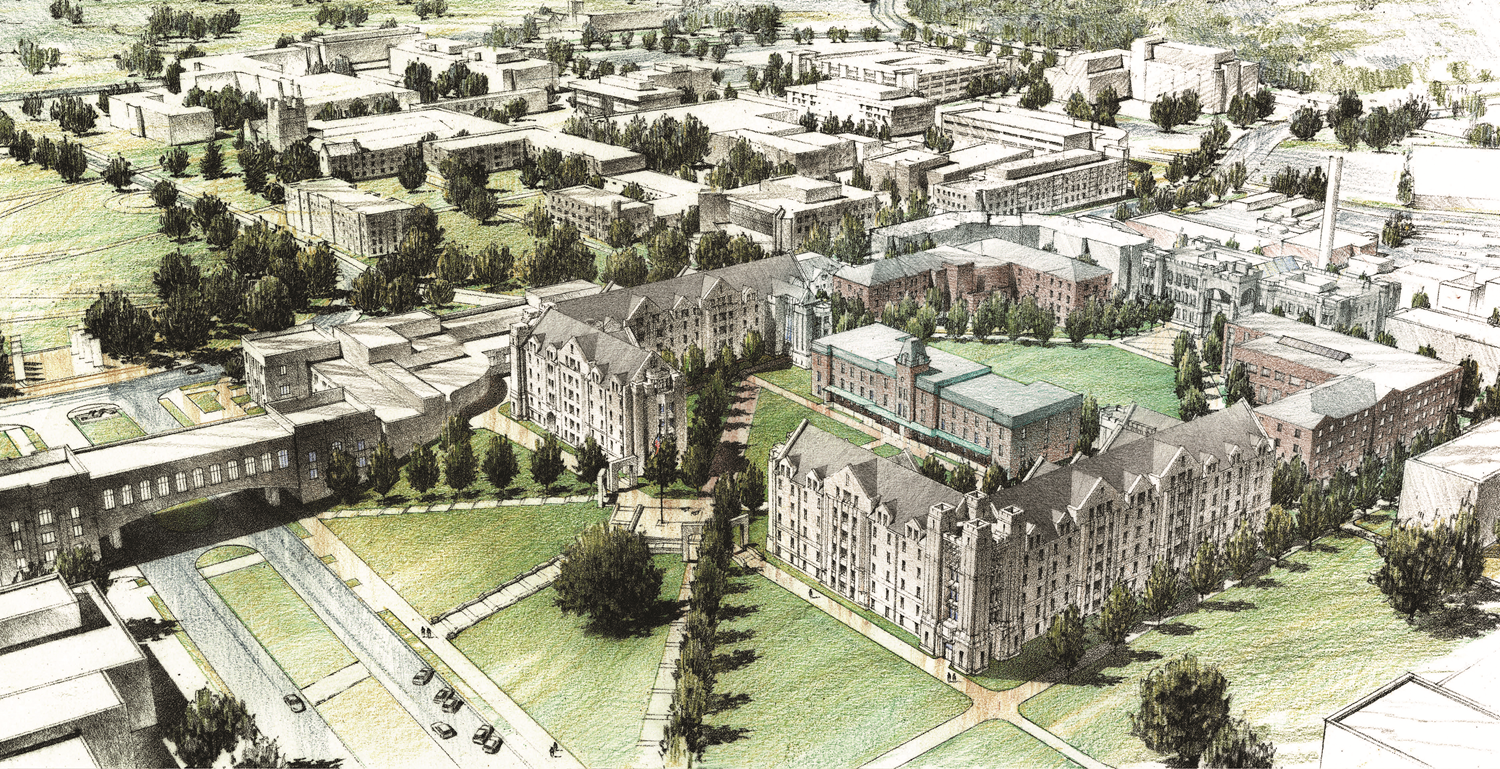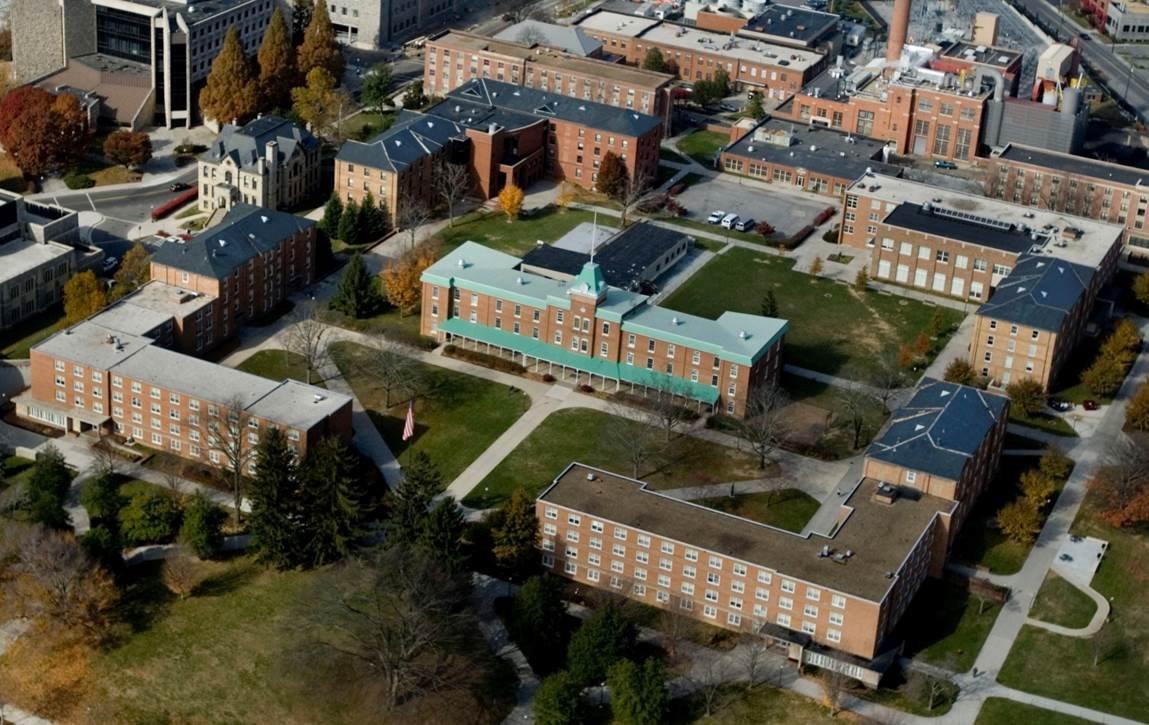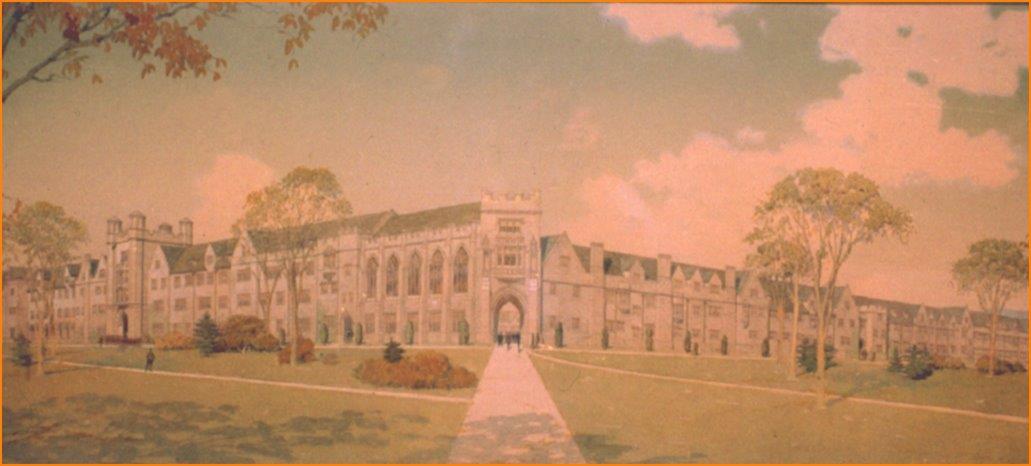Major redesign of the Upper Quad set to begin

Recognizing the continuing growth of the Virginia Tech Corps of Cadets and its need to house more than 1,000 cadets, the Virginia Tech Board of Visitors initiated on Monday planning efforts to address the buildings on the Upper Quad while honoring the historic nature of that precinct.
University planners envision replacing Brodie and Rasche halls with state-of-the-art residence halls to house more than 1,000 cadets. A new Corps Leadership and Military Science building will house the Corps of Cadets administrative staff, the Rice Center for Leader Development, Military Science (ROTC) staff, and other program needs such as corps and ROTC training rooms.
Lane Hall will be placed on the National Registry of Historic Sites and steps will be taken to preserve it for decades to come.

At the completion of the phased construction, Thomas and Monteith halls will be razed with no current plans for replacement.
“The corps represents one of our oldest programs and traditions, but has long ago outgrown its current facilities. It needs modern buildings to reflect its modern role in university life, while maintaining the heritage of the Upper Quad,” said Sherwood Wilson, vice president for administration.
Brodie and Rasche halls, the main dormitories for the corps were built in 1894 and 1900 respectively, and the “new” sections were added in 1957.
“Unfortunately, the structure and infrastructure of these old buildings are so dated as to make infeasible simply refurbishing them,” said Jason Soileau, assistant vice president for university planning. “Some rooms are too small, others too large, and the total square footage available is inadequate to provide sufficient bed spaces for today’s larger corps. We envision two new residence halls of about 95,000 square feet, each holding at least 500 cadets.”
Cadets are currently spread among four halls in the Upper Quad.
“It is interesting to look back over a 20 year time span and see in 1992 the Corps of Cadets totaled just 404 cadets as compared to Fall 2012, where we reached 1,066 participating cadets. This new number of cadets represents our largest corps since 1968,” said General Randal Fullhart, commandant.
“The university’s Corps of Cadets is vital and strong with continuing demand for admission. Needs are quite different for today’s cadets. Like all 21st century students, they create electrical and communications infrastructure demands that far exceed designs from over a half century ago. In addition, they also are issued far more equipment than in years past. Cadets and the corps in general have much larger storage requirements in rooms today,” said Fullhart.
The Office of University Planning commissioned an architectural design competition to develop concepts for repurposing the campus Upper Quad. Four national design firms: AECOM, Cannon, Clark-Nexsen, and Sasaki were selected to present their conceptual designs to the campus community.
“We are very pleased with the results of the design competition and the creative efforts brought forth by each firm. Once selected, the design firm will work closely with us as we further the Upper Quad precinct design. This will allow all stakeholders and the board of visitors to make a very informed decision on the future of the Upper Quad,” said Soileau.
The proposed 63,000-square-foot Corps Leadership in Military Science building will consolidate operations now scattered among five buildings in the Upper Quad precinct. Faculty and administrative offices for the Military Sciences Department and the Corps of Cadets will be located here along with modern classrooms.
University planners see consolidation of the corps and military science operations within these three new buildings and Lane Hall as win-win for the campus and the occupants bringing more efficient and effective operations throughout.
Femoyer Hall, currently home for some of these operations, could be repurposed.
“I am very excited about the possibilities created by addressing the needs of the Upper Quad,” said Wilson. “ Not only can we create desperately needed and appropriate spaces and facilities for the corps and military sciences program, we have a chance to establish the university’s iconic collegiate gothic design in an area built on century old traditions.”
Lane Hall, with its archetypal military-post architecture common to many land-grant universities, will be preserved and repurposed.
Recently, Doug Domenech, Virginia’s Secretary of Natural Resources, toured the Upper Quad with Kathleen Kilpatirck, director of Virginia’s Department of Historic Resources, and university leaders to discuss the need for the proposed renovations and to appreciate the steps being taken for Lane Hall’s preservation.
“Lane Hall is of unquestionable importance, reflecting the university’s earliest history and the corps’ proud traditions. So too are the program needs of the modern corps critically important and the case for new facilities is compelling,” said Kilpatrick. “Saving Lane and recognizing it on the Virginia State Landmarks Register and the National Register of Historic Places strikes a good balance and demonstrates Virginia Tech’s commitment to honoring its history and buildings of enduring value while moving forward,” she said.
Ironically, designs uncovered from the early 1900s demonstrate proposals to expand the Upper Quad facilities by enveloping them in collegiate gothic trim. Although not feasible at the time, these concepts, drawn either by J. Ambler Johnston or Ralph Adams Cram, served as the inspiration for the first McBryde Hall, which established the architectural vernacular now intrinsic to the Virginia Tech campus.










